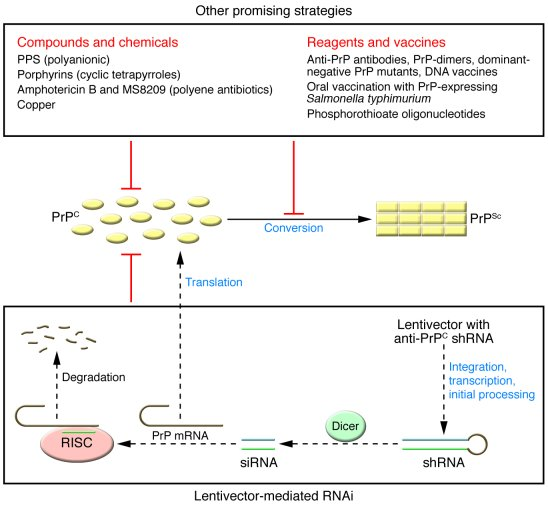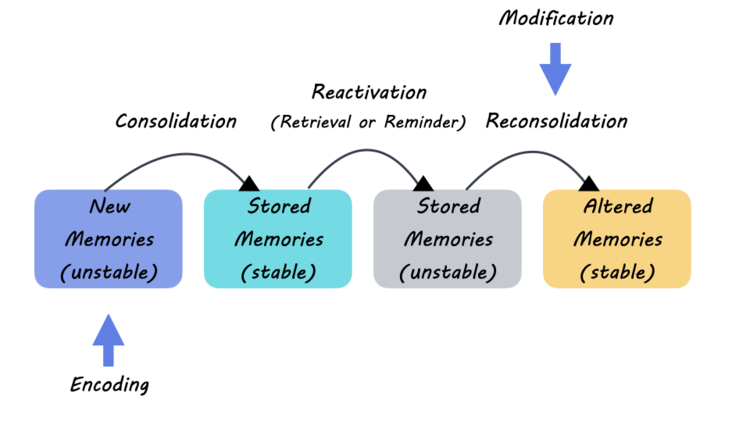Prion disease treatment is advancing rapidly, offering a glimpse of hope for those affected by these devastating conditions. Prion diseases, including fatal familial insomnia and Creutzfeldt-Jakob disease, lead to fatal neurodegeneration caused by misfolded prion proteins. Recent breakthroughs in prion disease research have spotlighted promising gene editing therapies that can significantly reduce the production of these harmful proteins in laboratory models. Patient-scientist collaborations, notably between individuals like Sonia Vallabh and Eric Minikel, are crucial in driving this innovative research forward. Their unique perspective as both researchers and patients fuels their commitment to finding effective therapies that could ultimately transform outcomes for countless individuals suffering from these relentless disorders.
The treatment of prion diseases, which are a class of lethal neurodegenerative disorders stemming from abnormal protein folding, is witnessing exciting developments. These ailments, known for their devastating impact on cognitive function and overall health, are increasingly becoming the focus of intensive research efforts. Innovative approaches like gene modification techniques—especially those targeting prion proteins—are emerging as potential strategies to combat the effects of these rare diseases. The collaborative spirit between medical scientists and patients emphasizes the importance of a shared mission in tackling these complex health challenges. This symbiosis not only enhances the scientific process but also brings personal stakes into the quest for breakthroughs in prion disease therapies.
Understanding Prion Diseases: An Overview
Prion diseases are a category of rare, devastating disorders that result from the accumulation of misfolded proteins in the brain, known as prions. These proteins cause a variety of neurodegenerative conditions, such as Creutzfeldt-Jakob disease and fatal familial insomnia. The enigmatic nature of these diseases lies in their progressive and always fatal trajectory, making them a focal point for researchers and healthcare professionals alike who seek effective interventions.
The understanding of prion diseases has evolved over the years, revealing their origins in gene mutations or sporadic occurrences. While 15% of cases can be traced back to hereditary mutations in the prion protein gene, approximately 85% arise sporadically, highlighting the unpredictable nature of protein misfolding. The need for comprehensive prion disease research is crucial as it opens pathways for developing targeted therapies that address both inherited and sporadic cases.
Milestones in Prion Disease Treatment
Recent advances in prion disease treatment have ignited hope among researchers and affected families. A landmark study led by scientists at the Broad Institute and published in Nature Medicine showcased the potential of gene-editing therapies to significantly reduce the presence of harmful prion proteins in the brain. By modifying a single base in the gene responsible for these proteins, researchers could halve their concentration and increase the lifespan of laboratory mice by an impressive 52%.
Despite these encouraging outcomes, researchers, including David Liu, caution that significant challenges remain before human trials can commence. Each breakthrough represents a milestone in the long journey toward effective prion disease treatment, emphasizing the need for ongoing research, collaboration, and adherence to safety protocols in future studies.
The collaborative efforts of the scientific community, combined with the personal motivations of affected patient-scientists, bring a unique sense of urgency to this research. Visionary couples like Sonia Vallabh and Eric Minikel are redefining the landscape of prion disease research, bridging the gap between patient experiences and scientific innovation.
The Role of Gene Editing Therapy in Prion Disease Research
Gene editing therapy is emerging as a pivotal approach in treating prion diseases. This innovative method allows scientists to target specific mutations within the prion protein gene, potentially stopping the harmful production of misfolded proteins. The recent breakthroughs demonstrated that employing a single-base editing technique could significantly mitigate the neurological damage caused by these proteins, opening doors for future applications in humans.
However, successful gene editing therapy in prion disease remains a complex endeavor. Experts emphasize the importance of refining these techniques to enhance targeting accuracy and reduce unintended effects, such as the potential for the viral vectors used in gene transfer to induce illness. Continuous research and collaboration are essential in evolving this cutting-edge treatment into a viable option for patients battered by these fatal conditions.
Fatal Familial Insomnia: A Personal Perspective
Fatal familial insomnia (FFI) serves as a harrowing reminder of the real-world consequences of prion diseases. It is an inherited disorder characterized by progressive insomnia, leading to severe neurological decline and ultimately death. For researcher Sonia Vallabh, the journey into prion disease research became deeply personal after she learned of her diagnosis. Vallabh’s experience embodies the critical intersection of science and personal tragedy, driving her commitment to developing effective treatments.
Vallabh’s pursuit of knowledge and potential therapies highlights the importance of patient involvement in scientific research. Understanding the personal battles faced by individuals affected by prion diseases can inspire researchers to prioritize innovative solutions and push boundaries in the realm of treatment options. The collaboration between patient experiences and scientific progress fosters a nurturing environment for advancements in prion disease treatment.
Collaborative Science and Patient Advocacy
The collaboration between scientists and patients plays a crucial role in advancing prion disease research. Patient-scientists like Vallabh and Minikel bring invaluable insights and motivation, fostering a culture of innovation driven by real-life challenges faced by those affected. Their work exemplifies a model for future research, where collaboration among researchers, patients, and healthcare professionals can yield more effective therapies.
Moreover, the significance of clinical collaboration extends beyond just scientific advancements. By integrating patient perspectives into the research process, scientists can create more relevant models and tools, ensuring that the outcomes of their studies meet the needs of those fighting these devastating diseases. This partnership not only enhances the research quality but also builds hope and trust between the scientific community and affected families.
The Promise of Personalized Medicine in Prion Diseases
As the field of prion disease research advances, the promise of personalized medicine emerges as a key strategy for developing effective treatments. Tailoring therapies to an individual’s genetic makeup, particularly in cases of hereditary prion diseases like fatal familial insomnia, offers a more targeted approach that could dramatically change outcomes for patients. Genetic profiling allows for the customization of gene editing therapies, potentially creating a more effective response to specific mutations.
This shift towards personalized medicine aligns with the broader trends in medical research, where understanding the unique genetic and molecular underpinnings of diseases paves the way for innovations that were previously unattainable. By focusing on personalized approaches, researchers can better manage the complexities of prion diseases, ultimately leading to improved survival rates and quality of life for those affected.
Future Directions in Prion Disease Research
The future of prion disease research looks promising but is also laden with obstacles that must be navigated strategically. Ongoing studies are crucial to understanding the mechanisms behind prion diseases and exploring various therapeutic avenues, including novel gene editing techniques. The path to clinical trials remains convoluted, emphasizing the need for persistence and collaboration within the scientific community.
Additionally, the establishment of robust partnerships among researchers, funding bodies, and patient advocacy groups can accelerate the research process. By fostering a collaborative environment that prioritizes transparency and shared knowledge, the prion disease research community can harness the collective expertise necessary to realize breakthrough therapies.
Ethical Considerations in Prion Disease Research
As with any emerging medical research, ethical considerations play a critical role in prion disease studies, particularly with therapies involving gene editing. Researchers must navigate complex ethical landscapes, including the implications of genetic modifications, informed consent, and the potential long-term effects of these interventions. Ensuring that ethical standards are upheld is essential for maintaining public trust and protecting the interests of patients.
Moreover, engaging with stakeholders, including patient advocacy groups, can provide valuable insights into ethical dilemmas faced in prion disease research. By collaborating with affected individuals and families, scientists can better understand the societal impact of their work and ensure that the benefits of new therapies outweigh the risks. This approach not only enhances ethical research practices but also enriches the conversation surrounding prion diseases.
The Importance of Funding and Support in Prion Disease Research
Funding and support are essential for the advancement of prion disease research, enabling scientists to push the boundaries of current knowledge and develop pioneering treatment strategies. Organizations like the National Institutes of Health and private foundations play a significant role in providing resources necessary for groundbreaking studies aimed at addressing these rare and fatal disorders.
Securing and allocating funding effectively is vital to sustaining research momentum, hiring skilled personnel, and conducting comprehensive clinical trials. Community involvement, through fundraising and advocacy, further strengthens the financial landscape for prion disease research, ensuring that innovative solutions continue to emerge and benefit patients in need.
Frequently Asked Questions
What is the latest advancement in prion disease treatment using gene editing therapy?
Recent research has demonstrated that gene editing therapy can effectively alter a specific base in the gene responsible for prion protein production. This advancement has shown to cut prion protein levels in the brains of laboratory mice by half and extended their lifespans significantly, suggesting promising potential for future prion disease treatment in humans.
How does gene editing therapy impact the treatment of fatal familial insomnia?
Gene editing therapy is particularly hopeful for conditions like fatal familial insomnia, where inherited mutations lead to prion diseases. By targeting the gene that produces the misfolded prion protein, researchers aim to create an effective treatment, marking significant progress in prion disease research.
What challenges remain before gene editing therapy can be used in human trials for prion disease treatment?
Despite the promising results from animal studies, several challenges must be addressed before gene editing therapy can be applied to humans. These include refining the base editing process, ensuring targeted delivery to minimize risks, and improving efficacy in reducing prion protein production, which are crucial steps in the prion disease treatment development pathway.
How are patient-scientist collaborations influencing prion disease research?
Patient-scientist collaborations are playing a vital role in prion disease research. Individuals like Sonia Vallabh, who personally face prion diseases, bring unique insights and motivation to the lab. Their experiences inspire researchers to expedite the development of new prion disease treatments, fostering a more collaborative and effective research environment.
What role does the Broad Institute play in advancing prion disease treatment research?
The Broad Institute of MIT and Harvard is at the forefront of developing gene editing therapies for prion diseases. With a focus on innovative techniques, such as single-base editing, the institute collaborates with researchers to translate findings from animal models into potential treatments for human prion diseases.
What is the significance of understanding prion protein production in prion disease treatment?
Understanding prion protein production is crucial for effective prion disease treatment. By identifying how to reduce the harmful levels of these proteins in the brain through gene editing therapy, researchers can pave the way for innovative treatments, highlighting the importance of ongoing prion disease research in finding a cure.
| Key Points |
|---|
| Research led by Sonia Vallabh and Eric Minikel aims to develop gene-editing therapy for prion diseases. |
| The study shows that altering a single gene base can reduce harmful protein levels in mice and extend their lifetimes by 52%. |
| Prion diseases are fatal conditions, including Creutzfeldt-Jakob disease and fatal familial insomnia, caused by misfolded proteins in the brain. |
| Sonia Vallabh’s personal experience with fatal familial insomnia drives her dedication to finding a treatment. |
| The research has received funding from notable institutions including the NIH and the Broad Institute, indicating significant institutional support. |
| Human trials remain several years away as researchers work to refine the gene-editing technique and ensure safety. |
Summary
Prion disease treatment is on the horizon, thanks to promising research from Sonia Vallabh and Eric Minikel, who are dedicated to combating the effects of these devastating conditions. Their work on gene-editing therapy holds potential for reducing harmful protein levels in the brain, thereby extending lifespans, and they are motivated by personal experiences with prion diseases. While human trials are still years away due to the necessary refinements and safety measures, the collaborative efforts in this field are encouraging. This research represents a significant milestone in our quest for effective treatments for prion diseases.




